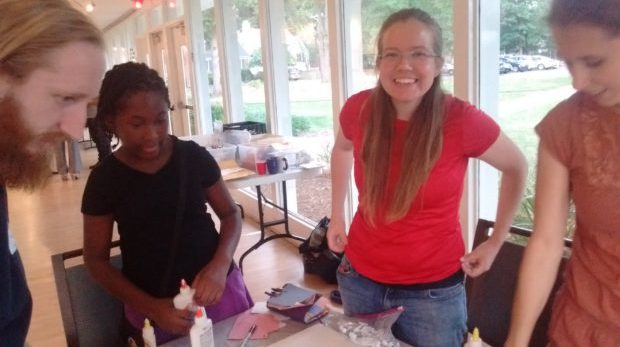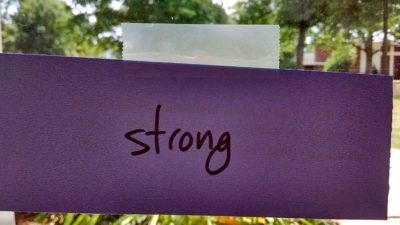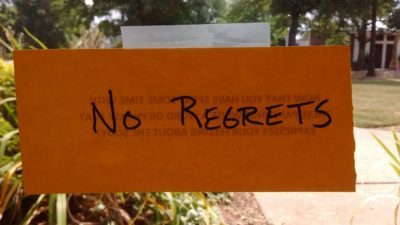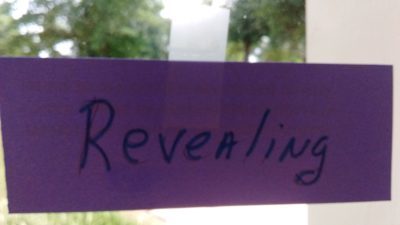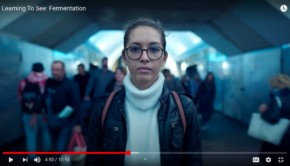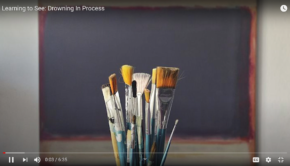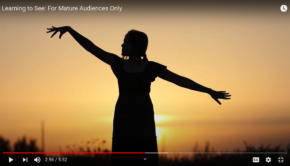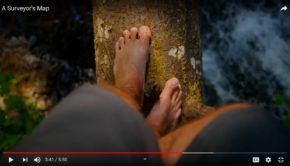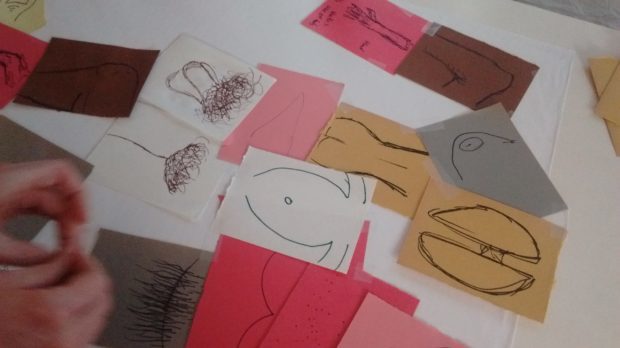
Body Talk: Fearfully and Wonderfully Made
Thoughts on the Violent Grace closing experience by Artistic Director, Lisa Cole Smith
The gallery is temporarily bare. The white walls loom large and bright. Almost too bright – highlighting the weight of what is missing. It is hard to say goodbye to the Violent Grace exhibit. Each 10×12 foot piece seemed to nestle onto the wall as if it had found a home. Now, they return to Edward Knippers’ studio and prepare to visit a new home.
I think the impact this exhibit has had on us as a staff and our community is not simply due to the size or graphic depiction of subject matter but for the way Ed’s work reached out and grabbed us in uniquely personal ways. It is one thing to view art work in a museum or gallery in an afternoon. It is another thing entirely to live with art week after week for months. It is especially moving to encounter artwork in a place of worship when our minds and hearts are open – seeking to be enlightened, changed and expanded.
Both the opening and closing reception for the Violent Grace retrospective were designed to be catalysts for deeper thinking and conversation on themes evoked by Ed’s work. While the first reception focused on observations about Ed’s process, theology and the art itself, the closing reception moved to a space of allowing the artwork to speak directly to us and for us as viewers to respond in kind – with our own art making.
Expressive Arts Therapist, Kathy Prudden, who co-facilitated the evening, invited each of us to engage the artwork through an art making station. Many of us chose media unfamiliar to us; actors choosing visual media, writers choosing movement, musicians choosing poetry. I think this added to the spirit of adventure and risk to explore topics that are often difficult to discuss. What is our initial response to contemporary painting about religious topics that feature nude and even violent subjects? How does it make us feel about our own bodies and the bodies of others? How do we think about bodies in our culture and what do we do with the commercialized, sexualized, perfection-driven messages we are bombarded with daily. And at the end of it all, how do we reconcile the experiences of shame related to bodies so common in church settings with our self-identification as the “Body of Christ?”
At the Body Talk closing reception my group chose visual arts to respond to Ed’s work. As we sketched various body parts on scraps of paper we talked about our own responses to the work and to cultural messages about the body in general. We all stated that we felt relatively comfortable with the exhibit and had allowed ourselves to be moved by different paintings. Our conversation at first, stayed in the comfortable realm of discussing what we liked and what had spoken to us, then moved to general observations about the culture at large. As we ventured into discussion about being the “body of Christ” one of the group participants referenced the Psalm 139:14 verse “I praise you because I am fearfully and wonderfully made.” At around that time we had run out of “acceptable” body parts to draw and started attempting the “private” areas of the body. We laughed at how even the visual artists in our midst were feeling a little uncomfortable, like middle schoolers drawing dismembered butts and penises and breasts on scraps of paper. As we drew, we were confronted with the reality that we are not as comfortable with embracing all parts of the body as we like to believe. Especially not our own bodies. Did we really believe we are “fearfully and wonderfully made”? Do we believe that our middle-aged bodies with pudgy guts and drooping lines are as fearfully and wonderfully made as baby bodies or 20 year old bodies? Do we believe bodies with illness or disability are any less fearfully and wonderfully made than those without? Which color or gender of bodies are we skeptical of or nervous about? Are we convinced they too are fearfully and wonderfully made?
Our art making process led us to the deeper questions. How do we really view our bodies? How do we really view the bodies of others? When all is said and done, what does the “body of Christ look like?” Are we imagining a twenty-year-old-prime-of-his-health-blond-haired-blue-eyed-young-man? What if we saw the body of Christ as an 80 year old Indian woman in a wheel chair? Or a blind seven year old? Or a young black man in a hoodie? Or a middle aged mother of four children with all the bodily changes that brings? Can we see these as fearfully and wonderfully made? Can we see us as them and them as us? Can we see something more than superficial attributes when we see our bodies?
Ed’s paintings are gone from our walls but I sincerely hope the impact of his work on our community will be long lasting. The multi-colored refractions of light in his paintings depict the inbreaking of the spirit to our bodily realm; shattering what was to rearrange and make room for something new. In the same way, we are left changed by the violent grace made present in our own lives through our experiences of these powerful paintings.

